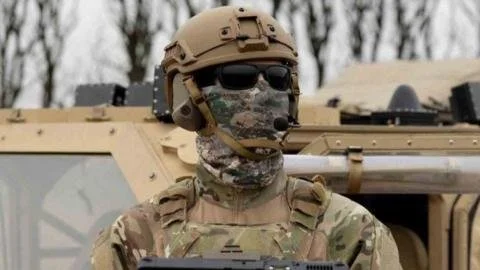Drones Beware! Innovations in Detection and Destruction
In the northern Danish city of Aalborg, the demand for drone detection and neutralization technology is skyrocketing, largely influenced by recent geopolitical tensions. MyDefence, a company led by CEO Dan Hermansen, has pivoted its focus from solely military applications to addressing the needs of civilian clients, including sectors crucial for critical infrastructure protection. Their innovative jamming system disrupts the communication links between drones and their operators, allowing drones to be safely guided to land rather than forcing them to crash.
However, effective drone counters begin with the challenge of detection. Andreas Graae of the Danish Defence Academy highlights that traditional radar struggles with drones due to their varying sizes and materials. To combat this, a range of cutting-edge technologies is being developed, such as acoustic sensors that pick up noises emitted by drones, high-resolution optical cameras, and advanced tactical radars that can distinguish between drones and birds.
Once identified, disabling a drone requires robust solutions. Electronic jamming is evolving rapidly, particularly due to lessons learned from the ongoing war in Ukraine, where both sides have had to adapt to a landscape rife with drone warfare. This has led to efforts from companies like Nordic Air Defence, which is designing a low-cost interceptor, produced through 3D printing, that can effectively neutralize rogue drones.
Financial considerations are paramount; the rising cost of defense tools relative to the decreasing price of drone technology presents a unique challenge. NATO Secretary-General Mark Rutte emphasizes that using expensive missiles against relatively cheap drones is untenable. As a result, there’s a pressing need for affordable solutions amid a surge in drone-related incidents across Europe.
Recent drone breaches in Poland and Romania highlight the broader security concerns as nations contemplate new strategies for detection and interception. Denmark has reacted by enhancing its capabilities, and Sweden is heavily investing in anti-drone systems, including hunter drones. The civilian sector also needs careful considerations, as taking down drones can pose safety risks; alternatives such as tangling nets and lasers are being explored, alongside hacking methods that neutralize drones safely.
Finally, a proposed solution is the development of a comprehensive drone traffic management system, allowing for the registration and tracking of drone flights. This would enhance safety and reduce public anxiety about unauthorized drone activity, helping distinguish legitimate drones from potential threats. Kasper Hallenborg stresses the importance of such systems in alleviating overburdened law enforcement, ensuring a safer aerial environment.

